Tourism brings significant economic benefits, but How Does Tourism Harm The Environment? SIXT.VN explores the environmental consequences of travel and offers solutions for sustainable tourism in Vietnam and beyond. Discover ways to minimize your ecological footprint and support eco-friendly travel with responsible tourism practices.
Contents
- 1. Tourism, Environment, and Climate Change: An Overview
- 1.1. The Dual Role of Tourism
- 1.2. The Strains of Mass Tourism
- 1.3. Rising Tourism Emissions
- 1.4. Climate Change and the Future of Tourism
- 2. How Does Tourism Harm the Environment? Unveiling the Negative Impacts
- 2.1. Degradation of Natural Environments
- 2.2. Waste Management Challenges
- 2.3. Water Scarcity
- 2.4. Noise and Light Pollution
- 2.5. Introduction of Non-Native Species
- 3. How Does Tourism Contribute to Climate Change? Understanding the Link
- 3.1. Air Travel Emissions
- 3.2. Increased Energy Consumption
- 3.3. Transport Within Destinations
- 3.4. Cruise Ship Emissions
- 3.5. Over-Reliance on Fossil Fuels
- 3.6. Food Production and Consumption
- 3.7. Land Use and Carbon Loss
- 4. Can Tourism Be a Force for Good? Exploring the Positive Potential
- 4.1. Incentivizing Protection
- 4.2. Community Benefits and Local Jobs
- 4.3. Raising Awareness
- 5. The Paradox of Climate-Vulnerable Destinations: Balancing Needs and Sustainability
- 5.1. Economic Dependency vs. Environmental Threat
- 5.2. Emerging Solutions
- 6. The Future of Tourism: Sustainable Practices and Innovations
- 6.1. Eco-Tourism and Responsible Travel
- 6.2. Renewable Energy and Green Infrastructure
- 6.3. Carbon Offsetting Programs
- 6.4. Community-Based Tourism (CBT)
- 7. Reducing Your Environmental Impact When Traveling: Practical Steps
- 7.1. Choose Eco-Friendly Accommodations
- 7.2. Travel Light
- 7.3. Offset Your Carbon Emissions
- 7.4. Use Public Transport
- 7.5. Support Local Businesses
- 7.6. Reduce Waste
- 7.7. Respect Local Wildlife
- 7.8. Be Energy Conscious
- 7.9. Avoid Over-Tourism Hotspots
- 7.10. Educate Yourself and Others
- 8. SIXT.VN: Your Partner for Sustainable Tourism in Vietnam
- 8.1. Eco-Friendly Transportation Options
- 8.2. Sustainable Accommodation Recommendations
- 8.3. Local and Authentic Experiences
- 8.4. Carbon Offsetting Initiatives
- 9. Conclusion: Embracing Sustainable Tourism for a Better Future
- 10. Frequently Asked Questions (FAQ) About the Environmental Impact of Tourism
- 10.1. How does tourism contribute to pollution?
- 10.2. What is eco-tourism, and how does it help the environment?
- 10.3. How can I reduce my carbon footprint when traveling?
- 10.4. What are the main sources of greenhouse gas emissions in the tourism sector?
- 10.5. How does tourism impact local communities?
- 10.6. What is community-based tourism (CBT)?
- 10.7. How does over-tourism harm the environment?
- 10.8. What is sustainable tourism development?
- 10.9. How can tourism businesses become more environmentally sustainable?
- 10.10. What role do governments play in promoting sustainable tourism?
1. Tourism, Environment, and Climate Change: An Overview
Global tourism is a powerful economic force, contributing significantly to the GDP of many nations. In 2024, the World Travel & Tourism Council reported that the travel and tourism sector contributed $10.9 trillion to global GDP. As international travel rebounds, with an estimated 1.4 billion international tourist arrivals recorded in 2024, the environmental impact of tourism becomes increasingly apparent. While tourism can support conservation efforts and local economies, it also contributes to pollution, habitat degradation, and greenhouse gas emissions. This poses significant challenges that require immediate and sustainable solutions.
1.1. The Dual Role of Tourism
Tourism can act as a catalyst for conservation by generating revenue and raising awareness about the importance of preserving natural and cultural resources. The economic value derived from tourism can provide incentives to protect ecosystems and support local communities. For example, the Great Barrier Reef in Australia generates over AUD $6 billion annually and supports approximately 64,000 jobs. Visitor fees from reef tours are reinvested in coral restoration and reef health monitoring. Countries like Costa Rica and Bhutan have successfully implemented tourism models centered around conservation. In Costa Rica, protected areas cover over 25% of the country’s land, funded largely through eco-tourism. Bhutan limits visitor numbers and charges a daily fee, which directly contributes to environmental protection and cultural preservation.
1.2. The Strains of Mass Tourism
Mass tourism can overwhelm destinations, placing immense pressure on environments, infrastructure, and local communities. In Venice, the influx of tourists has led to the introduction of a daily entry fee to manage crowds and protect the city’s cultural heritage. Rome is considering charges for access to iconic sites, and New Zealand has increased visitor levies to fund the protection of natural landscapes. These measures highlight the need for boundaries in tourism to prevent the degradation of the very attractions that draw visitors.
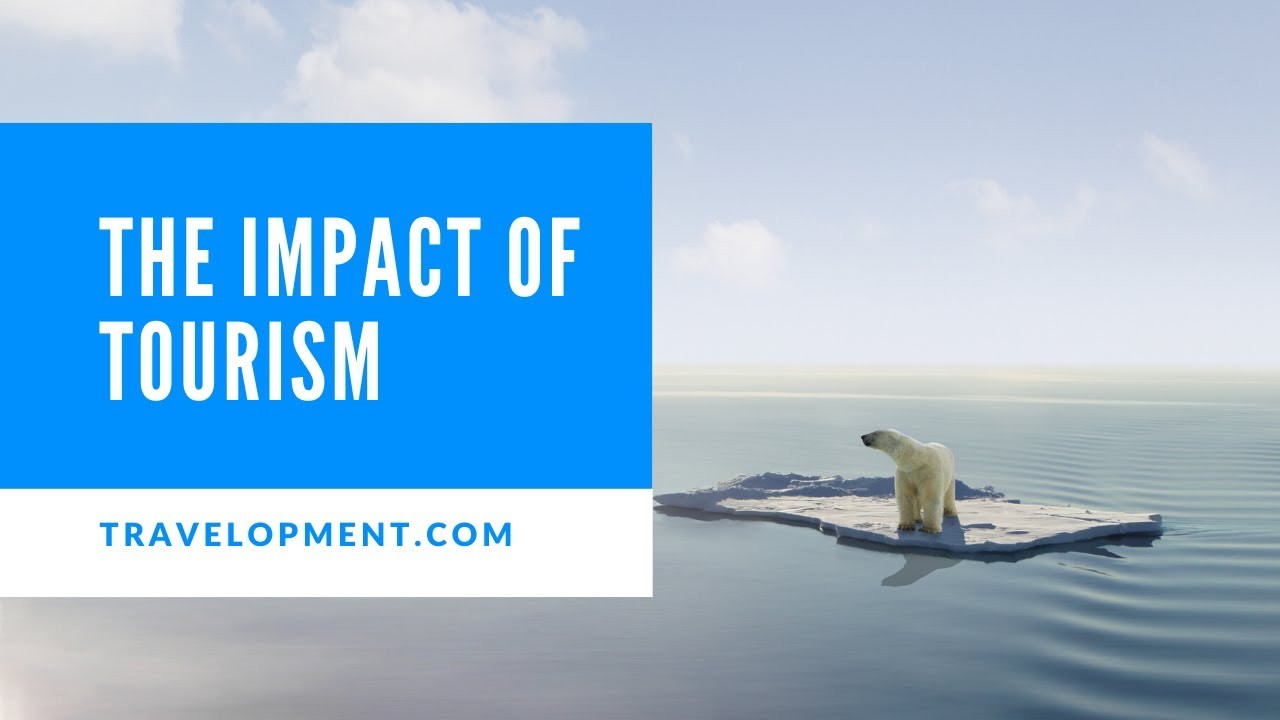 Venice Canals
Venice Canals
1.3. Rising Tourism Emissions
Tourism is a rapidly growing source of greenhouse gas emissions. A 2024 study by the University of Queensland, published in Nature Communications, found that emissions from tourism grew by 3.5% per year between 2009 and 2019, more than twice the rate of global emissions overall. By 2019, the sector accounted for 8.8% of total global emissions, with aviation responsible for about half of that total. This growth in emissions poses a significant threat to global climate goals.
1.4. Climate Change and the Future of Tourism
Climate change poses a direct threat to many popular tourist destinations. Rising sea levels, extreme weather events, and ecosystem collapse are endangering island nations like the Maldives and the Seychelles. The Great Barrier Reef has suffered repeated bleaching events due to warming oceans, and ski resorts in the Alps and Rockies face shorter seasons and unreliable snowfall. These impacts underscore the urgent need for efforts to reduce emissions and build resilience in the tourism industry.
2. How Does Tourism Harm the Environment? Unveiling the Negative Impacts
While tourism can offer economic benefits, it also leaves significant environmental scars. Unchecked tourism can degrade natural environments, leading to habitat destruction, pollution, and resource depletion. Let’s delve into the specific ways tourism impacts the environment:
2.1. Degradation of Natural Environments
Tourism hotspots, especially in ecologically sensitive areas, often experience habitat destruction due to infrastructure development. The construction of hotels, resorts, roads, and other facilities can lead to deforestation, land alteration, and disruption of local ecosystems. In Bali, for example, once-pristine beaches are now lined with sprawling resorts, affecting marine life and causing shoreline erosion.
2.2. Waste Management Challenges
The influx of tourists can overwhelm local waste management capacities, leading to pollution. Mount Everest, often called the “world’s highest garbage dump,” is littered with oxygen cylinders, plastic waste, and discarded camping equipment. This uncontrolled waste spoils the landscape and contaminates local water sources, affecting both human and wildlife populations.
2.3. Water Scarcity
Many tourist-heavy regions face immense pressure on their freshwater resources due to overconsumption by hotels and resorts, as well as diversion for recreational activities. Golf courses in arid regions consume vast amounts of water, putting local communities at risk. Islands like Santorini in Greece have seen their freshwater reserves depleted, forcing them to import water or rely on desalination.
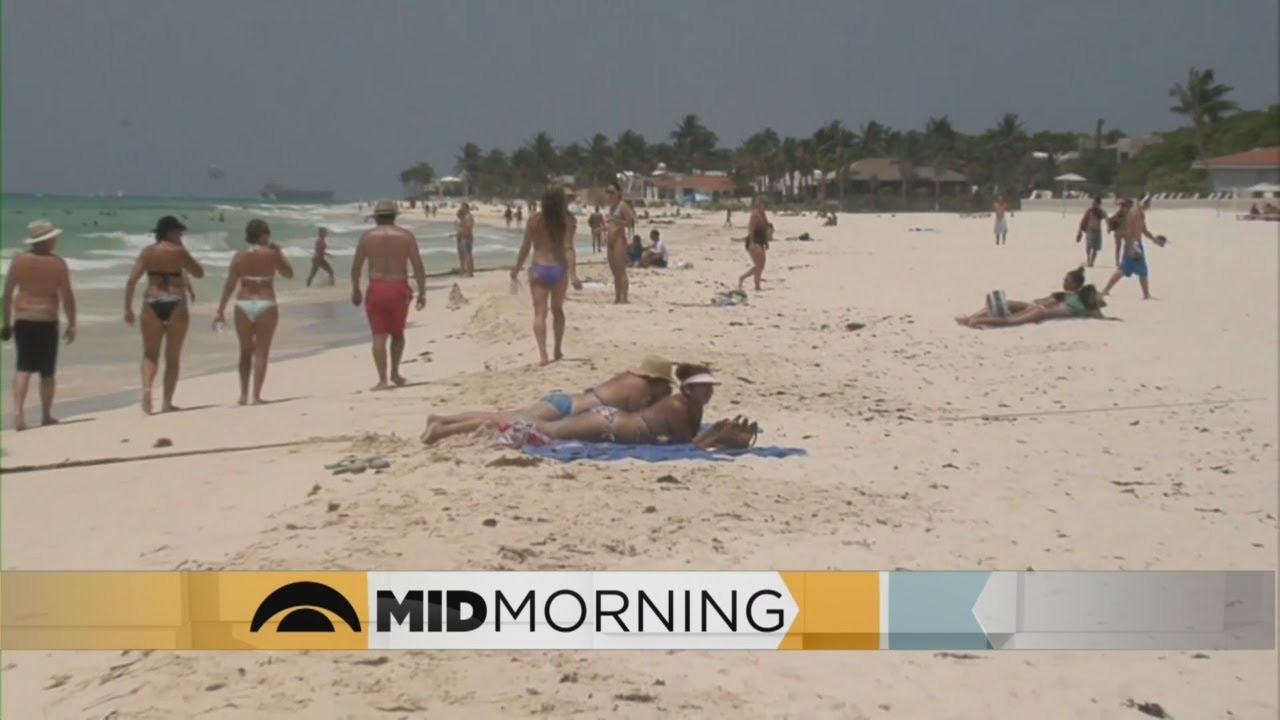 Water Scarcity
Water Scarcity
2.4. Noise and Light Pollution
Heavy tourist traffic generates noise and light pollution, disturbing wildlife and affecting their natural behaviors. Sea turtles, for example, rely on moonlight to find their way from the beach to the ocean but can be disoriented by bright lights from beachfront properties, endangering their survival.
2.5. Introduction of Non-Native Species
The introduction of non-native species, whether unintentional or deliberate, can upset the ecological balance of an area. In the Galápagos Islands, introduced species like goats and rats have devastated local flora and fauna, prompting costly eradication programs.
3. How Does Tourism Contribute to Climate Change? Understanding the Link
Tourism’s contribution to climate change is a major concern, with various activities adding to the problem. Here’s a detailed look at how tourism impacts climate change:
3.1. Air Travel Emissions
Aviation is the largest contributor to tourism emissions, accounting for 52% of the sector’s direct carbon footprint. Despite discussions about sustainable fuels, current efforts are insufficient due to weak regulation and industry lobbying, according to the International Energy Agency (IEA).
3.2. Increased Energy Consumption
High-end tourist accommodations often demand vast amounts of energy for heating, cooling, and lighting. Hotels and resorts account for 34% of tourism’s indirect CO₂ emissions, increasing the overall carbon footprint.
3.3. Transport Within Destinations
Local transport, including rental cars, buses, and boats, significantly adds to a tourist’s carbon footprint. These emissions are often overlooked but can be substantial, especially in areas with heavy tourist traffic.
3.4. Cruise Ship Emissions
Cruise ships consume large amounts of fossil fuel and emit CO₂ and other pollutants. Many have doubled in size since 2000, intensifying their climate impact, according to The Guardian.
3.5. Over-Reliance on Fossil Fuels
Many tourist hubs still rely on coal, oil, and gas for power. Without a shift to renewable energy sources, tourism’s emissions will continue to rise, exacerbating climate change.
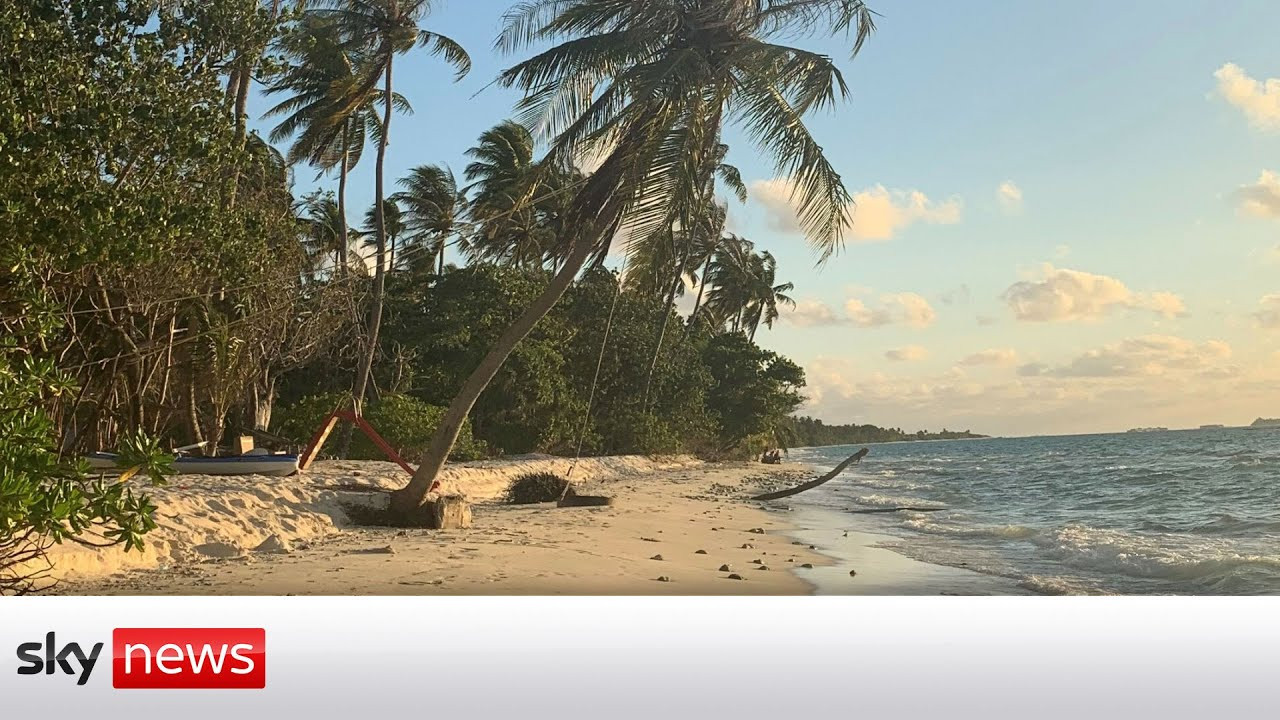 Fossil Fuels
Fossil Fuels
3.6. Food Production and Consumption
To meet visitor expectations, many destinations import large quantities of food, often non-local or out of season, driving up transport-related emissions. This contributes to the overall carbon footprint of tourism.
3.7. Land Use and Carbon Loss
Tourism development often leads to deforestation and soil erosion, removing vital carbon sinks and contributing to long-term emissions. Preserving natural habitats is essential for mitigating climate change.
4. Can Tourism Be a Force for Good? Exploring the Positive Potential
Despite the criticisms, tourism can also be a lifeline, bringing economic benefits, funding conservation, and empowering communities. When managed responsibly, it can turn natural and cultural heritage into assets worth protecting.
4.1. Incentivizing Protection
In countries with limited industrial capacity, tourism offers an economic alternative to environmentally damaging industries like mining or logging. Nature becomes more valuable intact than destroyed, providing an incentive to protect it.
4.2. Community Benefits and Local Jobs
Tourism creates jobs in remote or rural areas where other opportunities may be scarce, from guiding and hospitality to transport and crafts. These jobs often depend on healthy ecosystems and cultural integrity, incentivizing their preservation. Community-based tourism models, where locals are directly involved and benefit from tourism operations, are proving particularly effective.
4.3. Raising Awareness
Tourism can spark environmental awareness, giving travelers a firsthand understanding of what’s at stake. Trips to the Arctic, the Amazon, or a coral reef can lead to donations, advocacy, and policy shifts driven by personal experience.
5. The Paradox of Climate-Vulnerable Destinations: Balancing Needs and Sustainability
Some of the most climate-vulnerable places on Earth are also those most dependent on tourism. Small island nations, coastal towns, and remote landscapes often have few alternatives to tourism as a source of income.
5.1. Economic Dependency vs. Environmental Threat
Destinations like the Maldives, Fiji, the Seychelles, and the Caribbean rely heavily on air travel to survive economically, yet they are on the front lines of rising seas and stronger storms. The irony is stark: the very activity that sustains them also threatens their future.
5.2. Emerging Solutions
Addressing this paradox requires investing in more resilient infrastructure, diversifying economies so tourism isn’t the only lifeline, and rethinking high-value, low-impact travel. Fewer visitors, staying longer, spending more, and doing less harm can create a sustainable tourism model for these destinations.
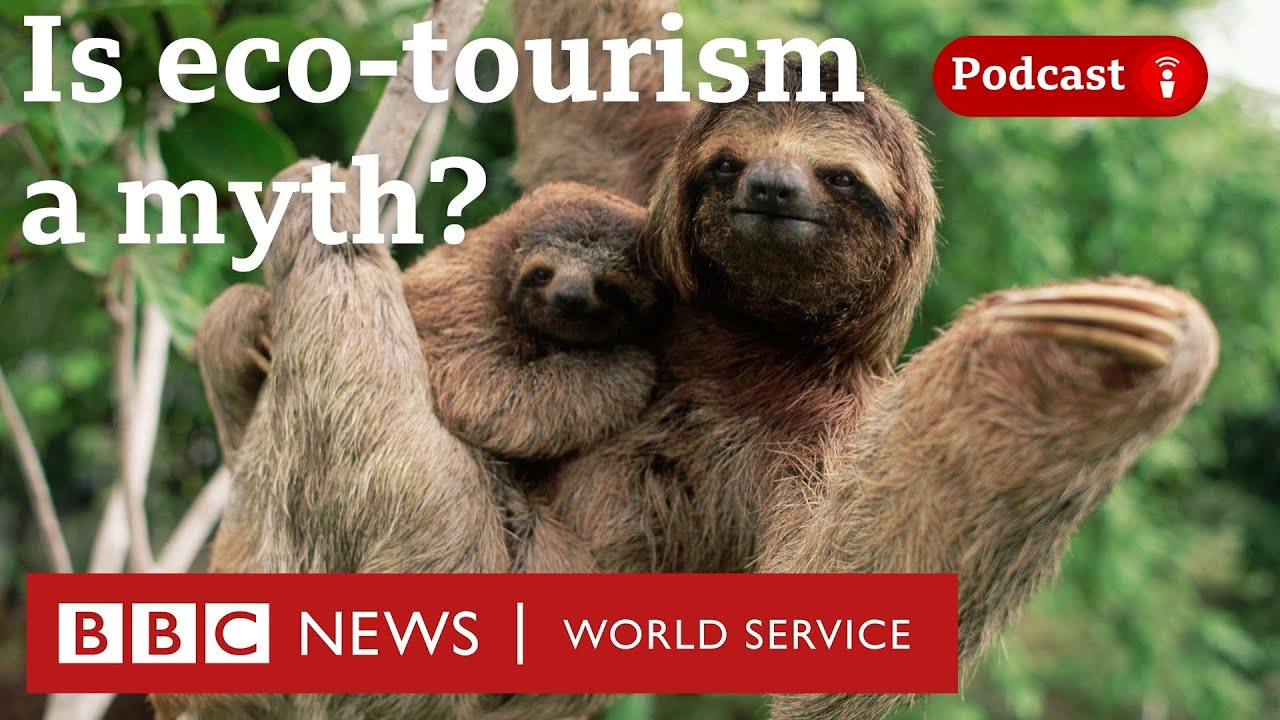 Climate Vulnerable Destinations
Climate Vulnerable Destinations
6. The Future of Tourism: Sustainable Practices and Innovations
The future of tourism depends on transitioning to sustainable practices that preserve the planet while allowing people to explore its wonders. Several strategies and innovations are emerging to drive this shift.
6.1. Eco-Tourism and Responsible Travel
Eco-tourism emphasizes responsible travel to natural areas, conserving the environment and sustaining the well-being of local people. Destinations like Costa Rica have successfully marketed themselves as eco-friendly hotspots.
6.2. Renewable Energy and Green Infrastructure
Investing in renewable energy and green infrastructure is crucial for making tourism more sustainable. Tourism businesses are adopting solar and wind power, reducing water usage, and implementing waste reduction strategies. Cities like Copenhagen have pioneered green urban tourism, integrating bike-sharing programs, green spaces, and energy-efficient public transportation.
6.3. Carbon Offsetting Programs
Carbon offsetting programs offer travelers a way to mitigate their impact by investing in environmental projects that reduce greenhouse gases. Airlines and travel agencies are increasingly offering carbon offset options.
6.4. Community-Based Tourism (CBT)
CBT focuses on empowering local communities by involving them directly in the tourism industry. This model ensures that the economic benefits of tourism are distributed fairly and that both cultural diversity and environmental integrity are maintained.
7. Reducing Your Environmental Impact When Traveling: Practical Steps
Individuals can take actionable steps to minimize their carbon footprint while still enjoying the benefits of exploring new places. Here’s how you can travel more sustainably:
7.1. Choose Eco-Friendly Accommodations
Opt for hotels and accommodations with strong environmental practices, such as energy efficiency, waste reduction, and water conservation. Look for certifications like LEED or Green Key.
7.2. Travel Light
Pack only what you need. Lighter luggage means less fuel consumption during transportation, which helps reduce carbon emissions.
7.3. Offset Your Carbon Emissions
Use carbon offset programs to compensate for the emissions generated by your flights or other modes of transportation. Invest in projects that reduce or remove carbon from the atmosphere.
7.4. Use Public Transport
Whenever possible, use public transport, walk, or cycle instead of renting a car or taking taxis. This reduces your carbon footprint and offers a more immersive way to experience a destination.
7.5. Support Local Businesses
Spend your money at locally-owned businesses, such as restaurants, shops, and tour operators. This helps support the local economy and reduces the environmental impact of transporting goods over long distances.
7.6. Reduce Waste
Carry a reusable water bottle, shopping bag, and utensils to minimize single-use plastic waste. Avoid products with excessive packaging to further reduce waste.
7.7. Respect Local Wildlife
Avoid activities that exploit animals, such as riding elephants or visiting poorly managed zoos. Support ethical wildlife tours and sanctuaries that prioritize animal welfare.
7.8. Be Energy Conscious
Turn off lights, air conditioning, and electronics when not in use. Consider taking shorter showers and reusing towels to conserve water and energy.
7.9. Avoid Over-Tourism Hotspots
Explore less popular destinations to avoid contributing to over-tourism. This helps reduce the environmental strain on popular sites and offers a more unique travel experience.
7.10. Educate Yourself and Others
Learn about the environmental impact of your travel choices and share this knowledge with others. By raising awareness, you can help spread the importance of sustainable travel.
8. SIXT.VN: Your Partner for Sustainable Tourism in Vietnam
SIXT.VN is committed to promoting sustainable tourism in Vietnam, offering services that minimize environmental impact while enhancing your travel experience.
8.1. Eco-Friendly Transportation Options
SIXT.VN provides a range of eco-friendly transportation options, including hybrid and electric vehicles, to reduce carbon emissions during your travels in Vietnam.
8.2. Sustainable Accommodation Recommendations
We partner with hotels and resorts that have strong environmental practices, ensuring your stay contributes to the preservation of Vietnam’s natural beauty.
8.3. Local and Authentic Experiences
SIXT.VN promotes tours and activities that support local communities and protect cultural heritage, offering you an authentic and sustainable travel experience.
8.4. Carbon Offsetting Initiatives
We offer carbon offsetting programs, allowing you to invest in environmental projects that mitigate the impact of your travel in Vietnam.
Ready to explore Vietnam sustainably? Contact SIXT.VN today to book your eco-friendly transportation, accommodation, and tours.
- Address: 260 Cau Giay, Hanoi, Vietnam
- Hotline/Whatsapp: +84 986 244 358
- Website: SIXT.VN
9. Conclusion: Embracing Sustainable Tourism for a Better Future
The future of tourism depends on the collective efforts of governments, businesses, communities, tourism professionals, and travelers. By embracing sustainable practices, investing in green infrastructure, and promoting responsible travel, we can create a future where tourism and the environment coexist in harmony.
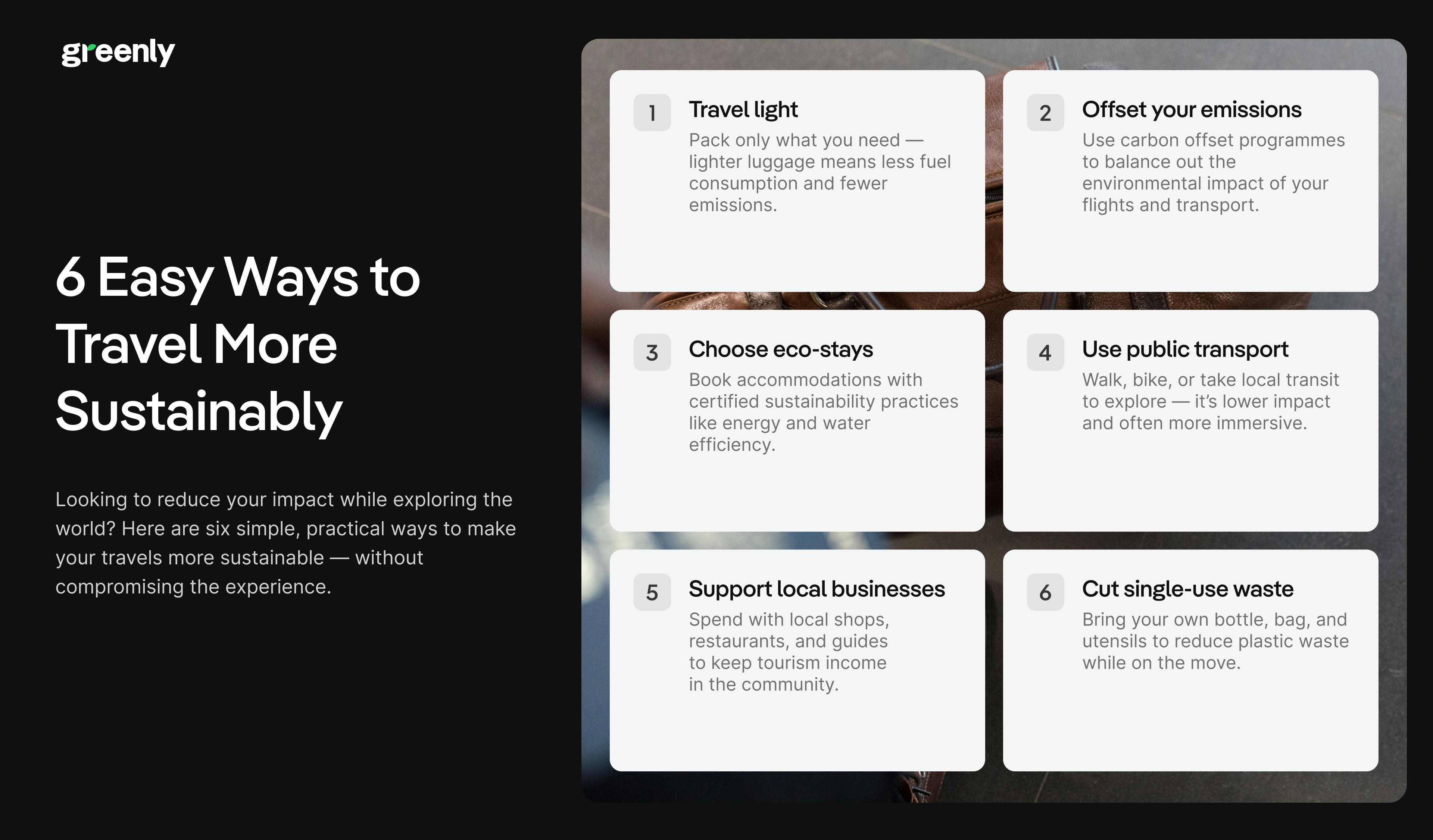 Sustainable Tourism
Sustainable Tourism
10. Frequently Asked Questions (FAQ) About the Environmental Impact of Tourism
10.1. How does tourism contribute to pollution?
Tourism contributes to pollution through waste generation, air travel emissions, and increased energy consumption, leading to environmental degradation.
10.2. What is eco-tourism, and how does it help the environment?
Eco-tourism is responsible travel to natural areas that conserves the environment, sustains local communities, and involves education, minimizing negative impacts.
10.3. How can I reduce my carbon footprint when traveling?
You can reduce your carbon footprint by choosing eco-friendly accommodations, traveling light, using public transport, and offsetting your carbon emissions.
10.4. What are the main sources of greenhouse gas emissions in the tourism sector?
The main sources of greenhouse gas emissions in the tourism sector include air travel, energy consumption in accommodations, and local transportation.
10.5. How does tourism impact local communities?
Tourism can impact local communities by creating jobs, supporting local businesses, and promoting cultural exchange, but it can also lead to over-tourism and cultural disruption.
10.6. What is community-based tourism (CBT)?
CBT involves local communities directly in the tourism industry, ensuring that the economic benefits are distributed fairly and that cultural diversity and environmental integrity are maintained.
10.7. How does over-tourism harm the environment?
Over-tourism leads to increased waste, pollution, and damage to natural and cultural sites, straining local resources and infrastructure.
10.8. What is sustainable tourism development?
Sustainable tourism development aims to meet the needs of tourists and host communities while protecting and enhancing opportunities for the future, ensuring that tourism resources are managed responsibly.
10.9. How can tourism businesses become more environmentally sustainable?
Tourism businesses can become more sustainable by implementing energy-efficient practices, reducing waste, using renewable energy, and supporting local conservation efforts.
10.10. What role do governments play in promoting sustainable tourism?
Governments play a crucial role in promoting sustainable tourism by implementing regulations that incentivize sustainable practices, investing in green infrastructure, and supporting community-based tourism initiatives.




